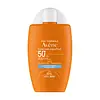What's inside
What's inside
 Key Ingredients
Key Ingredients

 Benefits
Benefits

 Concerns
Concerns

 Ingredients Side-by-side
Ingredients Side-by-side

Water
Skin ConditioningZinc Oxide
Cosmetic ColorantCoco-Caprylate/Caprate
EmollientSimmondsia Chinensis Seed Oil
EmollientSorbitan Olivate
EmulsifyingGlycerin
HumectantLecithin
EmollientPolyglyceryl-2 Dipolyhydroxystearate
Skin ConditioningCI 77492
Cosmetic ColorantGalactoarabinan
Polyglyceryl-3 Polyricinoleate
EmulsifyingCopernicia Cerifera Wax
Polyhydroxystearic Acid
EmulsifyingCetyl Phosphate
EmulsifyingSodium Chloride
MaskingOleic Acid
Emollient1,2-Hexanediol
Skin ConditioningCaprylyl Glycol
EmollientTropolone
Skin ConditioningWater, Zinc Oxide, Coco-Caprylate/Caprate, Simmondsia Chinensis Seed Oil, Sorbitan Olivate, Glycerin, Lecithin, Polyglyceryl-2 Dipolyhydroxystearate, CI 77492, Galactoarabinan, Polyglyceryl-3 Polyricinoleate, Copernicia Cerifera Wax, Polyhydroxystearic Acid, Cetyl Phosphate, Sodium Chloride, Oleic Acid, 1,2-Hexanediol, Caprylyl Glycol, Tropolone
Water
Skin ConditioningOctocrylene
UV AbsorberGlycerin
HumectantC12-15 Alkyl Benzoate
AntimicrobialMethylene Bis-Benzotriazolyl Tetramethylbutylphenol
UV FilterTitanium Dioxide
Cosmetic ColorantButyl Methoxydibenzoylmethane
UV AbsorberDiisopropyl Adipate
EmollientDicaprylyl Ether
EmollientBis-Ethylhexyloxyphenol Methoxyphenyl Triazine
Skin ConditioningCetearyl Isononanoate
EmollientCyclopentasiloxane
EmollientLauryl Glucoside
CleansingPolyglyceryl-2 Dipolyhydroxystearate
Skin ConditioningDimethicone
EmollientCyclohexasiloxane
EmollientCaprylic/Capric Triglyceride
MaskingCaprylyl Glycol
EmollientCitric Acid
BufferingDecyl Glucoside
CleansingDisodium EDTA
Helianthus Annuus Seed Oil
EmollientPropylene Glycol
HumectantSilica
AbrasiveSorbic Acid
PreservativeTocopherol
AntioxidantTocopheryl Glucoside
EmollientXanthan Gum
EmulsifyingWater, Octocrylene, Glycerin, C12-15 Alkyl Benzoate, Methylene Bis-Benzotriazolyl Tetramethylbutylphenol, Titanium Dioxide, Butyl Methoxydibenzoylmethane, Diisopropyl Adipate, Dicaprylyl Ether, Bis-Ethylhexyloxyphenol Methoxyphenyl Triazine, Cetearyl Isononanoate, Cyclopentasiloxane, Lauryl Glucoside, Polyglyceryl-2 Dipolyhydroxystearate, Dimethicone, Cyclohexasiloxane, Caprylic/Capric Triglyceride, Caprylyl Glycol, Citric Acid, Decyl Glucoside, Disodium EDTA, Helianthus Annuus Seed Oil, Propylene Glycol, Silica, Sorbic Acid, Tocopherol, Tocopheryl Glucoside, Xanthan Gum
 Reviews
Reviews

Ingredients Explained
These ingredients are found in both products.
Ingredients higher up in an ingredient list are typically present in a larger amount.
Caprylyl Glycol is a humectant and emollient, meaning it attracts and preserves moisture.
It is a common ingredient in many products, especially those designed to hydrate skin. The primary benefits are retaining moisture, skin softening, and promoting a healthy skin barrier.
Though Caprylyl Glycol is an alcohol derived from fatty acids, it is not the kind that can dry out skin.
This ingredient is also used as a preservative to extend the life of products. It has slight antimicrobial properties.
Learn more about Caprylyl GlycolGlycerin is already naturally found in your skin. It helps moisturize and protect your skin.
A study from 2016 found glycerin to be more effective as a humectant than AHAs and hyaluronic acid.
As a humectant, it helps the skin stay hydrated by pulling moisture to your skin. The low molecular weight of glycerin allows it to pull moisture into the deeper layers of your skin.
Hydrated skin improves your skin barrier; Your skin barrier helps protect against irritants and bacteria.
Glycerin has also been found to have antimicrobial and antiviral properties. Due to these properties, glycerin is often used in wound and burn treatments.
In cosmetics, glycerin is usually derived from plants such as soybean or palm. However, it can also be sourced from animals, such as tallow or animal fat.
This ingredient is organic, colorless, odorless, and non-toxic.
Glycerin is the name for this ingredient in American English. British English uses Glycerol/Glycerine.
Learn more about GlycerinPolyglyceryl-2 Dipolyhydroxystearate isn't fungal acne safe.
Water. It's the most common cosmetic ingredient of all. You'll usually see it at the top of ingredient lists, meaning that it makes up the largest part of the product.
So why is it so popular? Water most often acts as a solvent - this means that it helps dissolve other ingredients into the formulation.
You'll also recognize water as that liquid we all need to stay alive. If you see this, drink a glass of water. Stay hydrated!
Learn more about Water